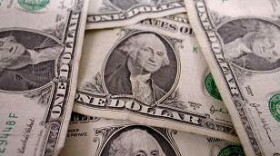Taking on debt is a daily fact of life for most American households. The data show the highest-income households carry the largest amount of debt.
But debt levels among poor, near-poor and moderate-income households has ballooned over the past decade.
Kristin Seefeldt is an assistant professor at the University of Michigan School of Social Work, and she wanted to find out why low-to-moderate income households borrow, and what happens when they do.
According to Seefeldt, irresponsibility is rarely the reason people go into debt. “The need to go into debt was really driven by these larger economic forces. You know, Great Recession. People lost jobs, peoples’ hours were cut,” she says.
Seefeldt tells us that another big factor when it comes to finding yourself in debt is the way government assistance programs are structured.
“When people would finally get on some sort of government assistance, that often took a long time,” Seefeldt says. “There were many months in between job loss and benefit receipt.”
Seefeldt says while most people can eventually get rid of their debt, the system could be tweaked to make that easier to accomplish.
“Yes, we want people to be able to repay their money,” she says, “but then fundamentally if that’s what we really want, then we need to do something about the wage structure.”





